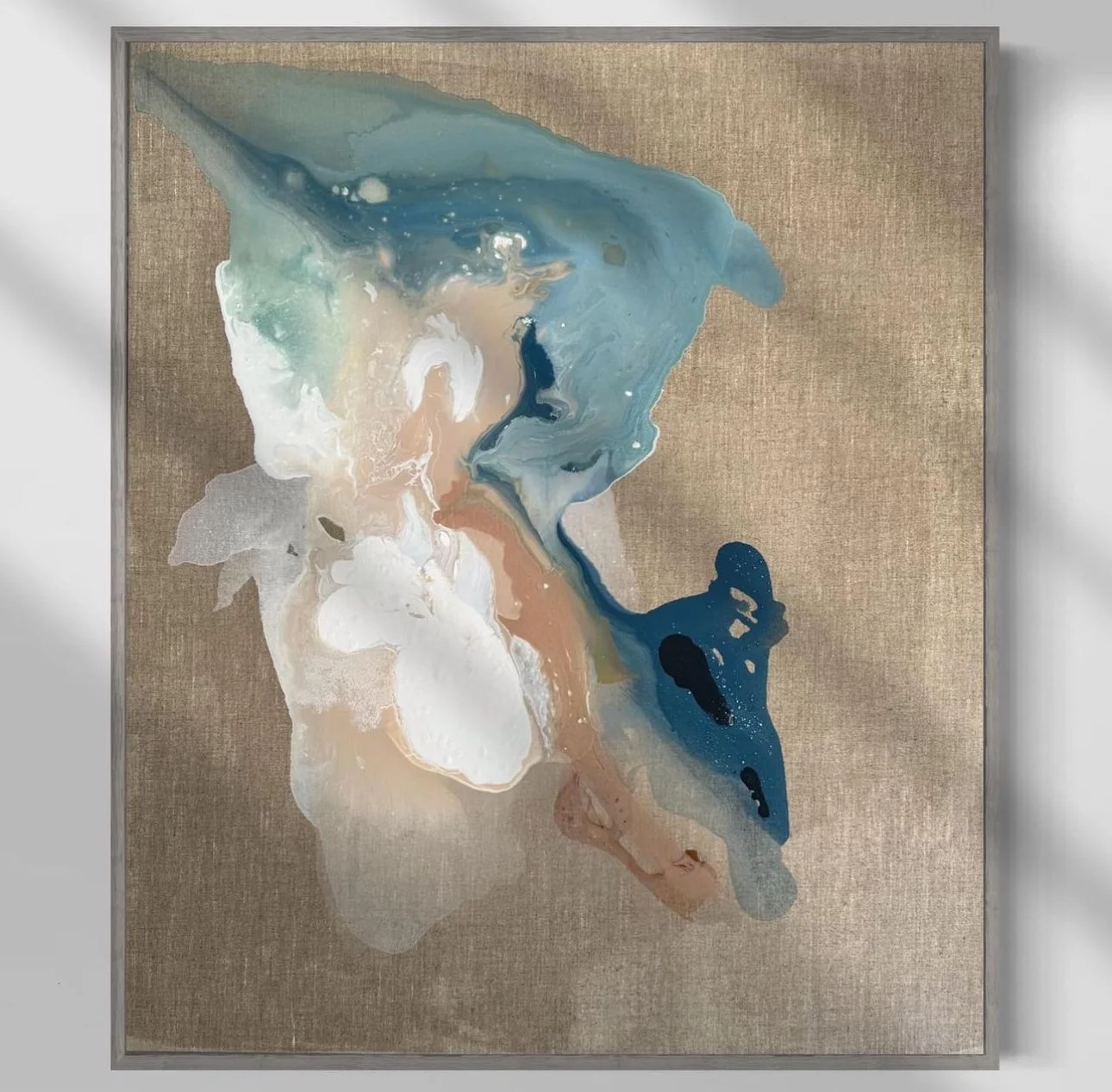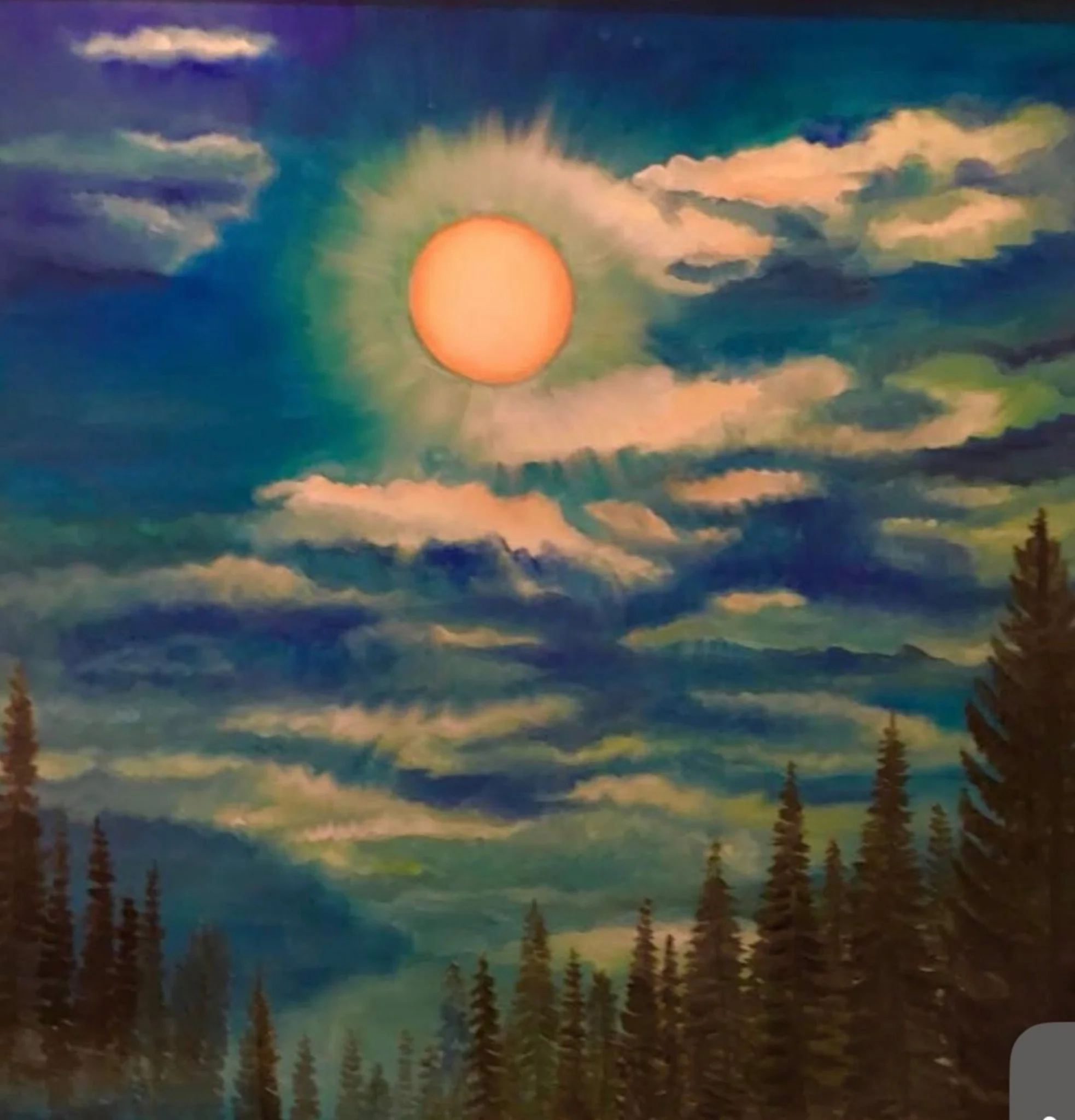Rania Abulhasan's artistic creations captivate the beholder through a mesmerizing journey into the realms of form, color, and texture. With each stroke and hue, she masterfully transcends the conventional confines of the canvas, inviting the viewer into a profound visual dialogue. Every stroke of the brush on these canvases forms an intricate web of abstract elements, challenging the viewer's inclination to neatly classify and label. The artist's deliberate choice to transcend conventional boundaries beckons us to engage in deep introspection and embrace the boundless possibilities of personal meaning.
All in Contemporary Art
Eugene Kuperman
Eugene Kuperman, a masterful painter, skillfully delves into the intricate depths of the human condition, deftly exploring the nuances of social issues and historical narratives. The artist's oeuvre is distinguished by a profound emotional resonance, a striking interplay between hope and despair, and a vibrant visual narrative that resonates with both the depths of the soul and the faculties of the mind.
IRIS
The artistic creations by IRIS captivate the viewer with their vibrant and expressive nature. Through a masterful use of color, each brushstroke contributes harmoniously to a visual symphony, resulting in a captivating and immersive experience. Through a masterful manipulation of color gradients and skillful rendering of contours, the artist known as IRIS has managed to encapsulate the very essence of her subjects. With a distinct perspective, she breathes new life into familiar visages, transporting viewers into a realm that borders on the psychedelic. The artist's mastery extends beyond mere representation of physical features, delving into the very essence of her subjects. Through her work, she unveils a profound emotional and psychological dimension that is frequently disregarded.
Interview with Ramón Rivas
Ramón Rivas was born in Lands of Don Quixote (Castilla-La Mancha / Spain), a land rich in literary and artistic heritage. His family environment and the multidisciplinary influence of his professional activity; in sports, music, engineering, inventions and art, in Castilla-La Mancha and Madrid, he was decisive for the artistic creation, of a very personal and different style, called Rivismo, based on the application of Experiential Brushstrokes. During the last nineteen years, his research has managed to reinforce the Concepts and Philosophy that predominate in Rivismo and that have given prominence to the material elements to which he has assigned aspects, functions and values of people.
Interview with Soo Youn Kim
What are some of the challenges you face in your artistic practice, and how do you overcome them?
Sometimes, it can be challenging to maintain an experimental approach while also creating work that resonates with a broader audience. When I encounter people who find my work difficult to understand, I often ponder on how to make it more accessible to the public. My approach to addressing this involves not only exhibiting the artworks themselves but also attempting to display accompanying texts or video materials that explain them.
Interview with Christine Rechnitzer
Christine Rechnitzer is an award winning contemporary visual artist of figurative and abstract art.
She graduated from Fashion School and was invited by
Friedensreich Hundertwasser to join his masterclass at the Academy of Fine Arts in Vienna. After a successful career in the pharmaceutical industry and in international retail, the lockdown phases led her back to creative work and she became what she is: a visual artist.
Interview with Irit Rotrubin
Your work has been described as treating photography like painting. Can you elaborate on how you approach photography with an artist's mindset?
I focus through the lens to find the angle and color or the special light and shadow of the object to create an image. It reminds a bit of the paintbrush.
Interview with Nataliya Revonyuk
Looking towards the future, what aspirations do you have for your art? Are there new themes or techniques you wish to explore?
I certainly plan to continue developing my unique graphic style. Additionally, I intend to increase the incorporation of augmented and virtual reality, which I am already using in my works. Perhaps, the most important goal for me is to learn how to create pieces that resonate with the soul of every individual even more, evoke positive emotions, and, hopefully, inspire them to live their unique life to the fullest every day. After all, isn't that why we are here?
Interview with Tamara Michel
As an award winning artist, how do you perceive the role of art in today´s society, and what impact do you hope your work will have on your audience and the wider community?
Despite the most difficult period in the life of society, people need art not less, but more. In particular fine art helps to survive the fear and horror of loss, inspires hope for the future and for a change for the better. These trends are in my works reflected and hopefully have a beneficial effect on some part of society.
Interview with Christine El Ojeil
When someone views your artwork, what emotions or thoughts do you hope to evoke in them?
I wish for the viewers to escape through my art. I would love for them, when they see a painting of mine, to dream, be curious, and be reminded to never lose hope.
Interview with Ulla Hasen
Ulla Hasen was born in Austria in 1966 and lives in Vienna. She studied natural sciences and technology, works in the field of sustainable development and began painting late in life. Her acrylic paintings are mainly abstract, sometimes bordering on the figurative, and are created in a very rapid, intuitive process.
Interview with Leigh Witherell
Painting in the melancholic style is a captivating and emotive genre that evokes a sense of sadness and introspection. This artistic approach often utilizes muted colors, somber tones, and shadowy imagery to convey a mood of melancholy and introspection. Artists who delve into this style explore themes such as loss, solitude, longing, and the transient nature of life. From the brushstrokes to the subject matter, every element in these paintings is carefully crafted to evoke a deep emotional response from the viewer. The melancholic style serves as a powerful medium for artists to express their innermost thoughts and feelings, creating a profound connection between the artwork and its audience. This is where award winning artist Leigh Witherell lives.
Interview with Bob Hendriks
As someone who has successfully ventured into entrepreneurial projects, including a commercial photo licensing company and a branding agency, how do you balance your business acumen with your artistic pursuits?
Being an entrepreneur I always look for new possibilities. My outlook on life is to make things better and or more beautiful. I think that this goal equally applies to business and art. For me, business and art feed each other and provide me with challenges, inspiration and satisfaction in my everyday life.
Interview with Sannie Guo
Could you share with us your earliest memory of being drawn to art? What initially sparked your interest in pursuing art as a career?
When I was in primary school, I was very interested in art class every time. Because my drawings always get the teacher's praise. When I was in high school, I naturally chose fine arts as my major.
Interview with Ted Barr
Your work beautifully merges celestial imagery with human biology, particularly inspired by Lennart Nilsson's photography. Could you elaborate on how this fusion shapes your artistic narrative?
I would say that first it shaped my believes and way of life, the artistic narratives emerged later. It has to do with a phrase I use often in my writings, I call it the separation illusion , meaning that we are accustomed to see the world as accumulation of separate entities. Viewing the celestial elements brings in mind that we are part of a much greater reality, our body is built out of trillions cells, the universe is created out of trillions galaxies, each cell has a nucleus and is composed out of myriad molecules and atoms, each galaxy is composed out of stars as our Sun and planets.
Interview with A.C.Rosmon
You've exhibited your work extensively, both in Denmark and abroad. Which exhibition or venue has been most impactful for your career and why?
Apart from the fact that the State-recognized Censored Exhibitions give you access to even better exhibition venues, all exhibitions give me something, because I always try to design my exhibitions for the place and according to the possibilities that the place offers. The post-criticism is also important to me.
Interview with Jaime Monge
As an architect with a strong background in design and creativity, what inspired you to transition into the world of painting, and how do you feel your architectural training has influenced your approach to art?
The main reason to transition into the world of painting would be the freedom to express my ideas without the limitations that I might have found in architecture. Being so, I would say that architecture gave me the tools to express myself artistically.
Interview with Howard Harris
Visual reality is an ever-shifting, highly individualized experience. In any given moment, what we see reflects our inner state and synthesis of outer qualities—light, color, movement, and space. Harris’s exploration as a Techspressionist in photographic art represents an attempt to recreate the perceptual experience, with its dynamic nature and hidden complexities. Howard Harris has long been fascinated by both visual perception and design. The Denver, Colorado, USA native earned a BFA from Kansas City Art Institute and a MID (Masters Industrial Design) from Pratt Institute in New York. In 2017, Harris was granted a United States Patent for a Layered Artwork, proving his work's uniqueness and inventiveness. Since then, his work has appeared in many books and publications and is represented by US, U.K., and European galleries.
Interview with Aurelio Gaiga
I have been painting since 1996.
In the first years, I experimented freely for a personal style.
From 2007 to 2017, I worked on a rigorous geometric abstraction.
Since 2018, I have been creating works that investigate the growing importance that technology has assumed and will assume more and more in our lives.
Interview with Ewa Zeller
You work with various mediums like oil, acrylic, pastel and watercolor. What draws you to these mediums, and how do you decide which one to use for a particular piece?
These are traditional painting techniques that are easy for me to use. I don’t mix techniques. I often paint outdoors, taking oil or watercolor with me, and pastels as a spare. The choice of technique is a matter of course without any thought; intuitively, I reach for a brush or a crayon. However, I love to paint portraits in oil techniques because they offer a lot of possibilities. Oil provides opportunities to obtain additional planes and unexpected exposure. Oil gives softness and plasticity.




















